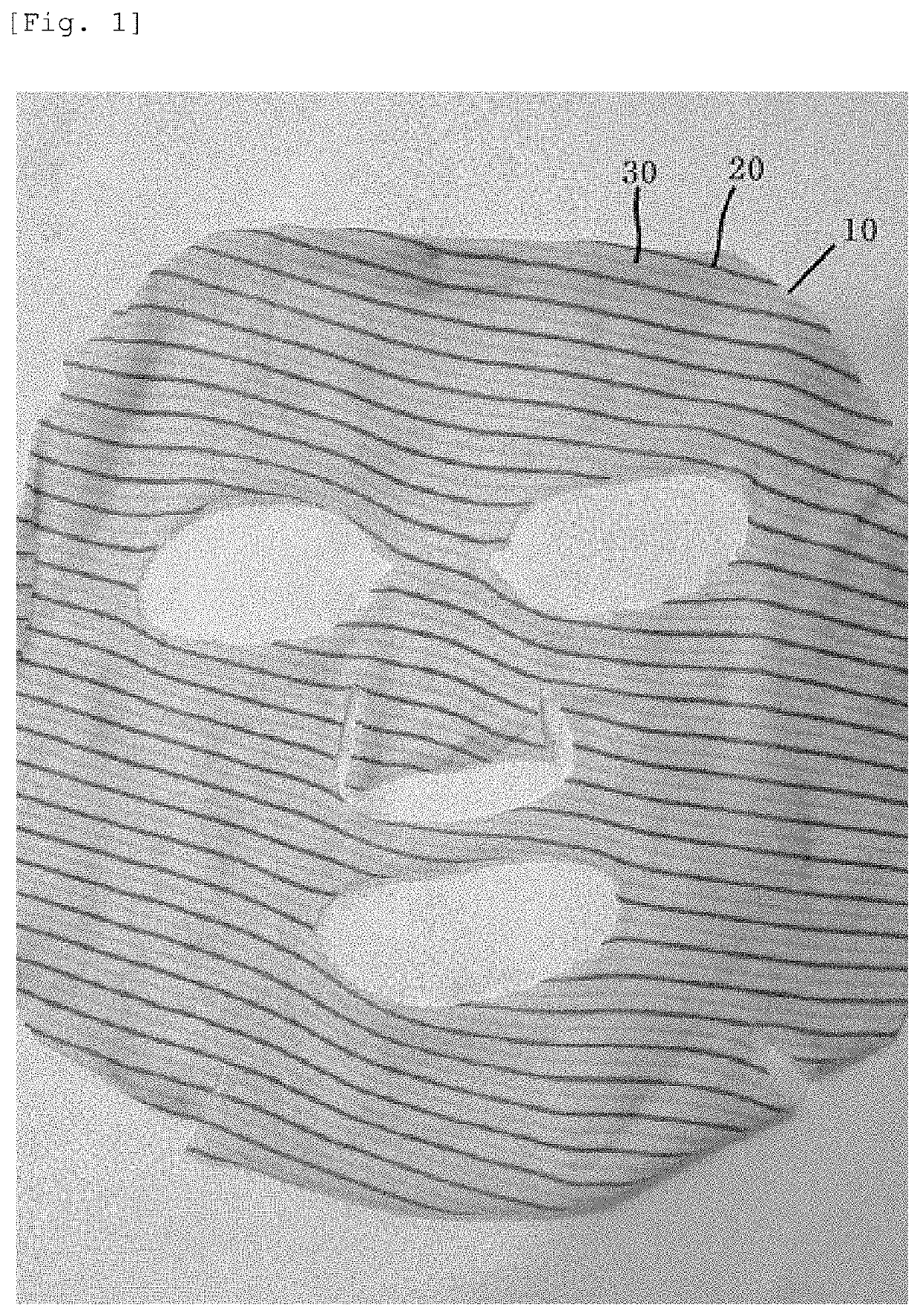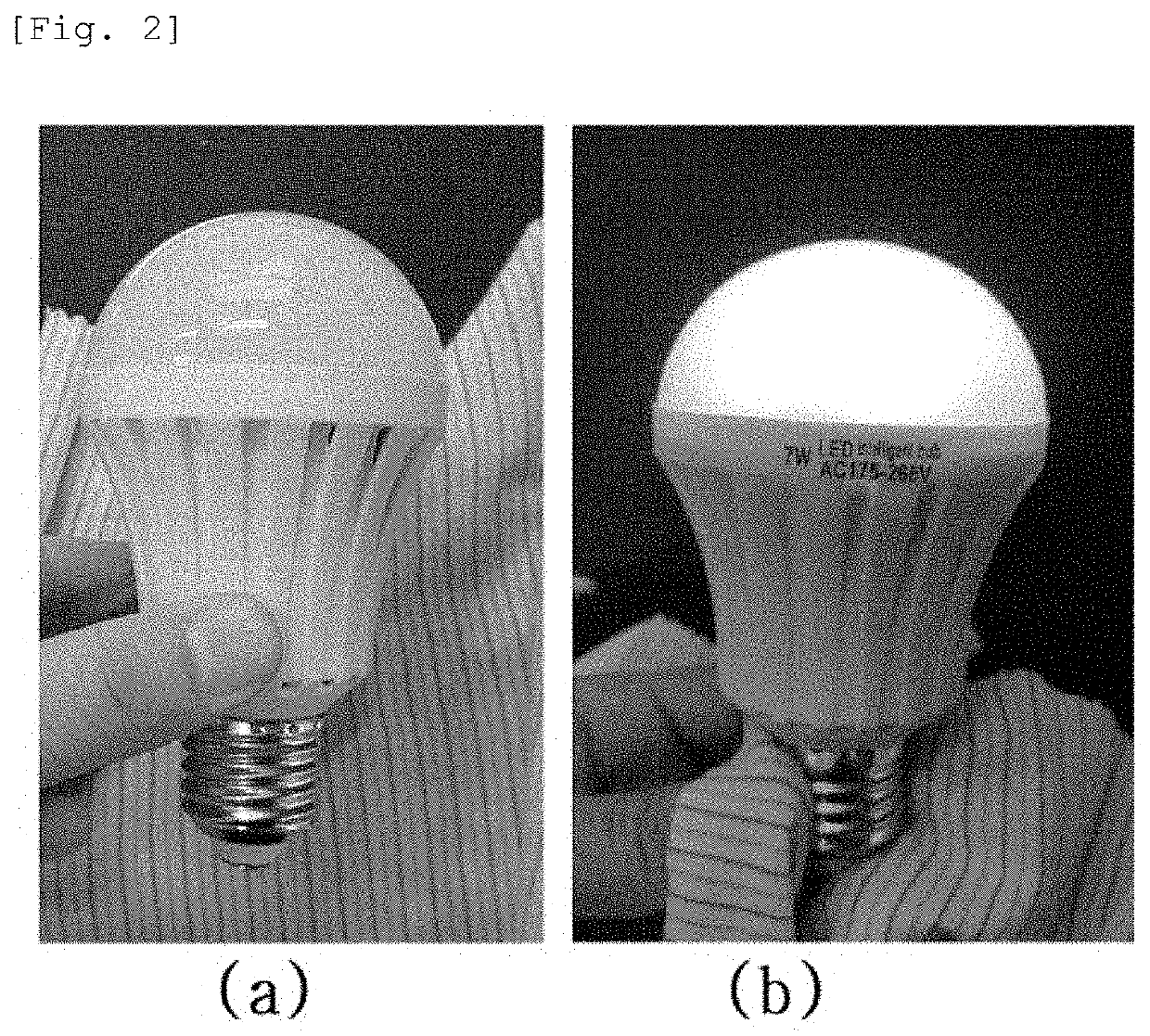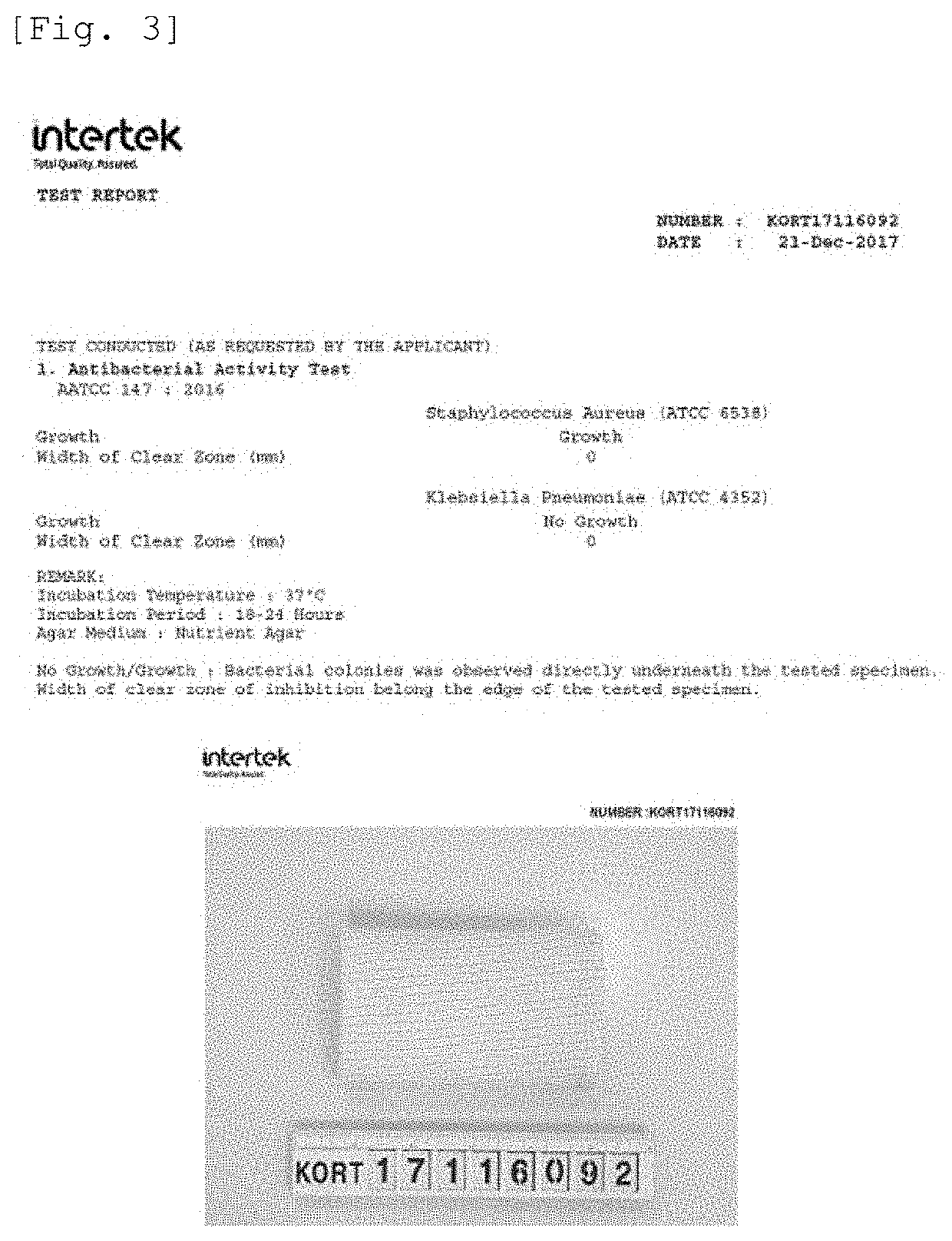Thin sheet mask having snug fit, electrical conductivity and antibacterial function, and manufacturing method for the same
a mask and thin technology, applied in the field of masks and masks, can solve the problems of poor tactile quality, low price of masks using nonwoven fabrics, and inability to create tight seals on the face, so as to reduce skin irritation, avoid or minimize the use of preservatives, and impart antibacterial functions.
- Summary
- Abstract
- Description
- Claims
- Application Information
AI Technical Summary
Benefits of technology
Problems solved by technology
Method used
Image
Examples
example 1
[0077]A knitting machine was used to make a knit fabric consisting of 5 wt. % of a copper-containing conductive 60-denier nylon fiber, 5 wt. % of a 70-denier Glotech fiber, and 90 wt. % of a 130-denier cotton fiber in a striped pattern with alternating stripes of the copper-containing conductive nylon fiber and the Glotech fiber. The knit fabric was scoured and cut into the shape of a face as shown in FIG. 1 to prepare a mask sheet. Referring to FIG. 1, on the cotton base 10 were formed alternating stripes of the copper-containing conductive nylon fiber 20 and the non-conductive nylon fiber 30.
[0078]The socket of a light bulb for measuring electrical conductivity was wrapped in the scoured knit mask sheet and plugged on. As can be seen from FIG. 2, the bulb lighted up. The antibacterial function of the scoured knit fabric was measured. As shown in FIG. 3, the scoured knit fabric proved to have antibacterial function to 100% reduction against Staphylococcus Aureus and Klebsiella Pneu...
example 2
[0081]A knitting machine was used to make a knit fabric including 10 wt. % of the copper-containing conductive nylon fiber, 10 wt. % of the Glotech fiber, and 80 wt. % of the 130-denier cotton fiber in a striped pattern with alternating stripes of the copper-containing conductive nylon fiber and the Glotech fiber. The knit fabric was scoured and cut into the shape of a face to complete a mask sheet.
example 3
[0084]The copper-containing conductive nylon fiber, the Glotech fiber, a 50-denier black polyester fiber, and a 30-denier black spandex fiber were arranged in a knitting machine. With the loop length of each fiber adjusted, the knitting machine was operated to form alternating stripes of the conductive nylon fiber and the Glotech fiber by knitting alternately with the polyester and spandex fibers.
[0085]5 wt. % of the copper-containing conductive nylon fiber, 5 wt. % of the Glotech fiber, 85 wt. % of the polyester fiber, and 5 wt. % of the spandex fiber were used to make a fabric in a striped pattern by textured knitting. The fabric was then scoured to complete a striped knit fabric.
[0086]The knit fabric thus obtained was cut into the shape of a face to make a mask sheet as shown in FIG. 5.
[0087]Referring to FIG. 5, on the polyester-spandex blend base 10 were formed alternating stripes of the copper-containing conductive nylon fiber 20 and the copper-containing non-conductive nylon f...
PUM
| Property | Measurement | Unit |
|---|---|---|
| particle diameter | aaaaa | aaaaa |
| thickness | aaaaa | aaaaa |
| thickness | aaaaa | aaaaa |
Abstract
Description
Claims
Application Information
 Login to View More
Login to View More - R&D
- Intellectual Property
- Life Sciences
- Materials
- Tech Scout
- Unparalleled Data Quality
- Higher Quality Content
- 60% Fewer Hallucinations
Browse by: Latest US Patents, China's latest patents, Technical Efficacy Thesaurus, Application Domain, Technology Topic, Popular Technical Reports.
© 2025 PatSnap. All rights reserved.Legal|Privacy policy|Modern Slavery Act Transparency Statement|Sitemap|About US| Contact US: help@patsnap.com



